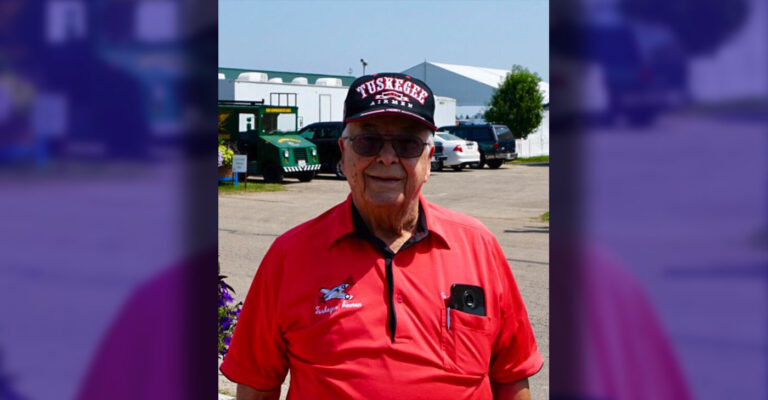By Stacy M. Brown
Black Press USA Senior National Correspondent
Lieutenant Colonel George E. Hardy, one of the last surviving Tuskegee Airmen to fly combat missions during World War II, has died in Sarasota, Florida. He was 100 years old.
Hardy was born in Philadelphia on June 8, 1925. He entered the U.S. Army Air Corps at 18 and graduated as a pilot at 19, becoming the youngest Red Tail fighter pilot of the 332nd Fighter Group. Stationed at Ramitelli Air Base in Italy, he flew 21 missions across Europe. “We had our own club in Naples…so you didn’t go to the White club. That’s…the way life was,” Hardy said in an interview with the Veterans History Project. When the war in Europe ended in 1945, Hardy returned to the Tuskegee Army Airfield as a supervising pilot until it closed in 1946. His career continued across two more conflicts. He flew 45 combat missions in the Korean War and 70 more in the Vietnam War. His decorations included the Distinguished Flying Cross with Valor, a Commendation Medal with one Oak Leaf Cluster, and an Air Medal with 11 Oak Leaf Clusters.
Education remained central to his life. He earned a bachelor’s degree in electrical engineering and a master’s degree in systems engineering reliability from the U.S. Air Force Institute of Technology. He also received an honorary Doctor of Public Service from Tuskegee University. “We went into the Air Force with racial segregation. When we came out, we changed…When I look back on my service, I’m so proud of the Air Force. And I just think I was able to participate in that and survive that,” Hardy said. The Tuskegee Airmen, Inc. called Hardy’s legacy one of “courage, resilience, tremendous skill and dogged perseverance against racism, prejudice and other evils.”
“Colonel Hardy was an amazing man. He was a patriot. He loved his family. He loved his community. He loved our organization,” Leon Butler Jr., national president of Tuskegee Airmen, Inc., said. “He worked very hard. He worked tirelessly to preserve the legacy, not for himself, but for those that he served with, and he cared about the families of other original Tuskegee Airmen.” The National WWII Museum honored him as a “true American hero,” while the Tuskegee Airmen National Organization honored him by noting that, “His legacy of courage and dedication will never be forgotten.”







